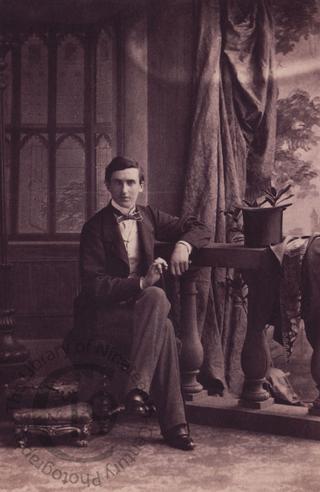
Prince Johann II of Liechtenstein
A carte-de-visite portrait of Prince Johann II of Liechtenstein (1840-1929).
Born on 5 October 1840, the son of Aloysius II of Liechtenstein and his wife Countess Franziska Kinsky, he succeeded his father in 1858. His reign of more than seventy years is the second longest in European royal history, after that of Louis XIV of France.
Prince Johann was a connoisseur and patron of the arts. He ordered the reorganization of the Liechtenstein gallery, which he expanded through extensive purchases. He also supported numerous other museums through generous donations.
In 1921 he granted the Principallity a modern constitution along parliamentary and democratic lines.
Prince Johann never married. He died on 11 February 1929 and was succeeded by his brother, Prince Franz I.
According to this obituary in the Times (12 February 1929), ‘On the resulting dissolution of the German Confederation, the Prince abolished military service, and subsequently entered into a monetary, postal, and Customs union with Austria, which endured until the fall of the Austro-Hungarian monarchy. So strong, however, was the hold the dynasty on the Principality, and so universally beloved was the Prince, that not even the disappearance of the neighbouring Empire of Austria and of the German monarchies was able to shake the stability of the throne of Liechtenstein, which remains, to the pride of its inhabitants, the only surviving monarchy in Central Europe. The only change effected by the Great War was to substitute a Swiss for an Austrian Customs and monetary union. This union, however, did not affect, any more than had the Austrian connexion, the sovereign status of the Principality, nor did it cause the Prince to discontinue to issue his own stamps and coins. The latter, which after the War were struck in Swiss francs instead of in Austrian crowns, are among the handsomest coins of the 20th century.
’The late Prince was deeply loved by his 11,000 subjects, and was always ready to place his large private resources at the disposal of his people. A noted patron of the arts, he endowed his Principality with a number of churches and public buildings, and successfully restored the old castle of Vadus, a typical stronghold of the Middle Ages, which towers over the Principality’s little capital of the same name. Outside the Principality he was distinguished for having made of the gallery in the Liechtenstein Summer Palace in Vienna what is probably the finest private collection of pictures in Europe.’
Photographed by Camille Silvy of London in 1860.
Code: 124992




